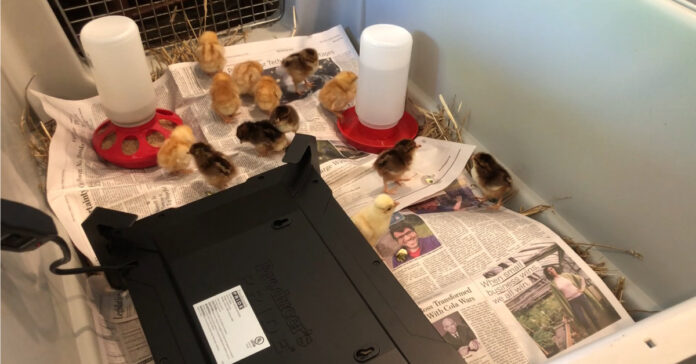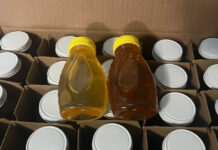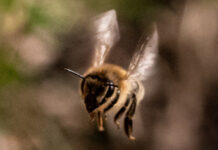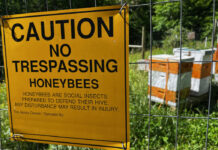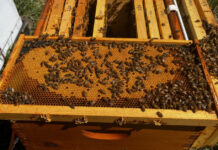We were expecting the baby chicks to show up today on either the 6:30 a.m. mail truck of the 8:30 a.m. truck. Both deadlines pass, so I take a shower, grab the garbage, and head out to pick up my two additional hives of bees.
I dropped the garbage off at the waste disposal and management site and was heading toward a breakfast biscuit when the phone rang. It was the post office. The chicks had arrived—more than an hour later than expected. By now, I’m half an hour away, so they would have to wait. I figure, they’ve been in the post offices hands for 36 hours, another one or two won’t matter. So I get breakfast, stop by the ATM so I can pay for my bees, and then visit the bee lady.
We had a friendly chat about pollen flow, her queen breeding business, and other bee-related matters. Then we bundled the two hives into the back of my truck, and I headed to the post office, which was about 45 minutes away. As soon as I walked in the door, I could hear the chicks peeping.
They cheeped and peeped all the way home. I think it is a sound we’ll have to get used to. I bet the post office worker were not sad to see them go.
Upon arrival at home, I set the two nucs in the bee yard, opened their hatches to let the foragers out while I dealt with the chicks.
Cute Fluffy Chicks
All 17 chicks arrived alive and well. I give both the hatchery and the post office credit. I know shipping chickens is a common occurrence and happens thousands of times every day in the spring, but I still find that pretty amazing.
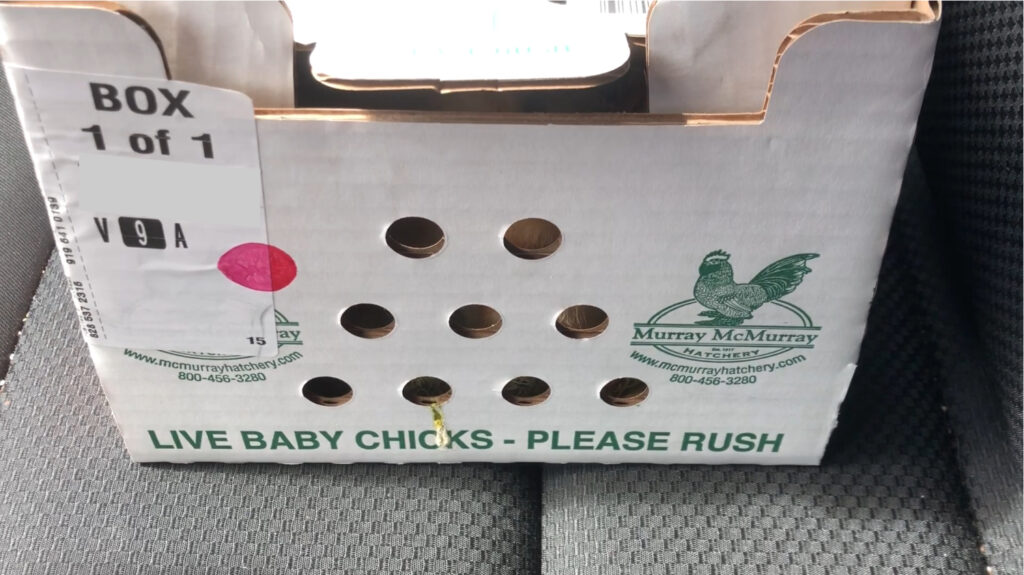
My wife happily joined me in lifting the little gals out of their shipping container and dunking their beaks into the waterer so they would know where to find it. I was a little surprised she wanted to participate, but I think they were so cute that she could not resist. I expect she loaded her social media with photos of baby chickens.
We also showed them where the food was, but they picked up on the water much faster. Then I sprinkled food on the newspaper we had set down in the brooder and around and on the feeder. That did the trick! They scratched and pecked at the food until they found the feeder and some of them dug right in. The others learned by example.
The hatchery says the most common reason chicks die is no food or water. We are doing our best to avoid that problem.
Identifying our Chicks
We received eight speckled Sussex chicks, which have nice brown bodies and striped backs and tails. We also received eight of the Red Star checks, which are a yellowy-brown. These are a special breed developed by Murray McMurray Hatchery and are an excellent layer of brown eggs. Our free bird is a lighter yellow with a bit of fuzz on its head. I am not expert enough to tell by just looking at the chick, but after looking on the hatchery’s website, I suspect it is a Buff Silkie Bantam, a White Polish, a Buff Lace Polish, or some other variety of Polish. We’ll have to wait until he or she grows up to figure it out.
The Sussex are the most active chicks, darting about their enclosure at road runner speeds while the others move at a more leisurely pace.
Getting the Bees Established
Once the chicks settled in and looked to be doing well, I donned my bee suit and went to see about the bees.
Both nucs were good, but one was just packed with bees and brood. I followed the friendly bee lady’s advice and checkerboarded in a frame of foundation. She said it would encourage them to expand and keep them from being honey bound. (For you non-beekeepers, “checkboarding” means that instead of adding all five frames from the nuc to their new hive in a row, which is traditional, I inserted a frame of foundation in between a frame of brood and a frame of honey. “Honey Bound” means that the queen usually will not cross a frame filled with honey to lay eggs on an empty frame. This can limit the hive’s expansion.)
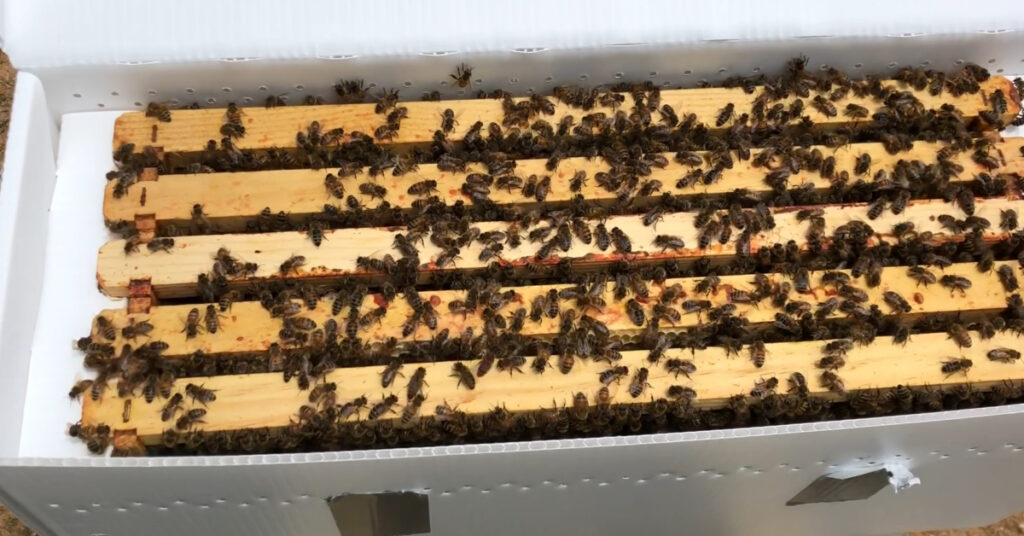
The transfer from the nucs to the new hives went smoothly. These bees also seemed calmer than yesterday’s, possibly because I had let them fly around for a while first. I think it is also likely that they had not been confined to the nuc for very long.
When I checked back in late afternoon, the stronger of the two hives was doing very well. The weaker hive had very few bees flying in and out. I think its bees may be younger, but as the existing nurse bees grow older and the new bees are born, this problem will resolve itself. In the meantime, I changed the hive opening to its smallest size. When I checked late in the evening, they were nine or ten bees drinking the syrup, so it should be in good shape.
Right now, I have three hives with queens from two different sources. All three were born in 2021 and are marked with a white dot.
Bringing in the Pollen
The first nuc was going strong today. The bees from the first hive have obviously become oriented and are finding sources of forage. When I monitored how many bees I saw bringing in pollen, I counted six in a one-minute period. Not bad for a newly established hive with only five frames. The pollen was a nice yellow, but I do not know what plant it was from. I hope that when I check later today, the other hives will bring in pollen as well. For the time being, at least, it looks like I will be able to put the pollen replacement patties back in the freezer.
Fencing
I had hoped to get started on the fencing today, but no such luck. Between the bees, chicks, a brief nap, and taking my wife out in the evening, I got little done. I doubt I will get much more done today because we are getting together with friends at 2 p.m.
For those of you not interested bees and chickens, I promise to cover another topic tomorrow!

